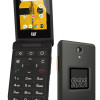Primer: Intro To Cellular Networks
Governments the world over define ranges of radio frequency to be used for specific uses. Those uses range from radio broadcasts (FM and others) to television transmission to cellular communications and even ranges called unlicensed spectrum which provide a band for cordless phones, Wi-Fi, and Bluetooth to work in.
Many countries cooperate to make sure that the range of radio spectrum they license for a particular use is the same as other countries, at least nearby countries. For instance FM radio uses the rage from 88 to 108 MHz nearly the world over. These ranges are defined in Hertz (Hz), which is one of the measurements used for radio waves. Cell phones, FM Radio and other new technologies often use very small radio waves, which are measured in Megahertz (MHz).
Europe worked together to assign radio spectrum for cellular phones as well and since they are such a large force in the cellular world, most of the Middle East, Africa and Asia has chosen to use the same bands. European phone use the 900 and 1800 MHz bands for their older GSM networks, and the 2100 MHz bands for their new 3G networks. GSM and 3G will be explained later in this article.
Because the US had already assigned the 900 and 1800 MHz bands to other uses, they broke with the European standards. First, they licensed the 850 MHz range for cellular phones, which is why this is often referred to as the Cellular band in the US. It is also called the 800 MHz band. They later added the 1900 MHz band, which is often called the PCS band. Instead of 850 and 1900 MHz, Nextel operates in some separate spectrum near the 850 Mhz band.
Canada and Mexico both follow the US's lead for radio licensing as does much of Latin and South America. Most of their cellular networks also operate on 850 or 1900 MHz as well. Although the US has defined a specific spectrum range for 3G, it has not been auctioned off yet. Instead of waiting for an auction, carriers with enough spectrum are launching advanced networks on the two existing bands.


 iPhone 14 Plus Offers a Big Screen For Less
iPhone 14 Plus Offers a Big Screen For Less
 Qualcomm Taps Iridium for Satellite Connectivity
Qualcomm Taps Iridium for Satellite Connectivity
 New Asus Phone for Snapdragon Fans Showcases Qualcomm Tech
New Asus Phone for Snapdragon Fans Showcases Qualcomm Tech
 Google Pixel 5a Sports Large Battery, Water Resistance
Google Pixel 5a Sports Large Battery, Water Resistance
 CAT Puts Android With Play Store in a Compact Flip Design
CAT Puts Android With Play Store in a Compact Flip Design

